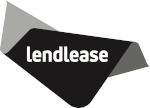Modern Office Design: Transforming Workspaces for the Future
Posted by The Urban Hyve Team on 18th Feb 2025
In today's fast-paced business world, the design of an office can significantly impact productivity, employee satisfaction, and overall company culture. Modern office design goes beyond just aesthetics; it encompasses functionality, flexibility, and a focus on well-being. This article explores the core elements of modern office design, highlights current trends, and provides practical advice on creating a workspace that supports both your team's needs and your company's goals.
Understanding Modern Office Design
Definition and Key Characteristics
Modern office design is characterized by its focus on creating efficient, comfortable, and aesthetically pleasing work environments. This approach emphasises open spaces, natural light, and flexible layouts that can adapt to various work styles. Key characteristics include clean lines, minimalistic decor, and the integration of technology to enhance functionality.
Historical Evolution of Office Design
Office design has evolved from the rigid, hierarchical layouts of the early 20th century to the open, collaborative spaces of today. Early offices were characterized by cubicles and partitioned spaces, reflecting a top-down management style. Modern office design, however, embraces a more fluid approach, promoting open-plan layouts and flexible workstations that encourage collaboration and creativity.
Key Elements of Modern Office Design
Open Plan Layouts
One of the most prominent features of modern office design is the open plan layout. This design encourages collaboration by removing physical barriers between employees, fostering a sense of community and teamwork. Open plan spaces can be adapted with modular furniture and movable partitions to create flexible work areas that accommodate different needs.
Ergonomic Furniture
Ergonomics plays a crucial role in modern office design. Ergonomic furniture, including adjustable chairs, sit-stand desks, and supportive workstations, is essential for promoting employee health and comfort. Proper ergonomic design helps reduce strain and injuries, enhancing overall productivity and job satisfaction.
Sustainable Materials and Practices
Sustainability is a key consideration in modern office design. Incorporating eco-friendly materials, such as reclaimed wood, recycled metal, and low-VOC paints, reduces the environmental impact of office spaces. Additionally, implementing energy-efficient lighting and climate control systems contributes to a greener workplace.
Technology Integration
Modern offices are increasingly integrating technology to streamline operations and improve efficiency. Features like smart lighting systems, high-speed internet, and advanced communication tools are now standard. Technology integration not only enhances productivity but also supports remote work and virtual collaboration.
Open Plan Office With Workstations and a Glass Boardroom with Executive Reception Lounges
Creating a Productive Workspace
Designing for Collaboration
An effective modern office design fosters collaboration by creating spaces that facilitate teamwork and communication. This can be achieved through the inclusion of communal areas, such as lounge spaces and break rooms, where employees can interact and brainstorm. Flexible meeting rooms equipped with video conferencing tools also support collaborative efforts.
Enhancing Comfort and Wellbeing
Comfort and well-being are central to modern office design. Natural light, biophilic elements like indoor plants, and climate control systems contribute to a healthier work environment. Providing spaces for relaxation and social interaction helps reduce stress and improve overall job satisfaction.
Incorporating Flexibility and Adaptability
Flexibility is a hallmark of modern office design. Workspaces should be adaptable to various functions, from individual tasks to team meetings. Modular furniture and adjustable workstations allow for easy reconfiguration, ensuring the office can evolve with changing business needs.
Popular Modern Office Design Trends
Minimalist Aesthetics
Minimalism continues to be a popular trend in modern office design. Clean lines, neutral colours, and uncluttered spaces create a serene and focused work environment. Minimalist design also emphasises functionality, with furniture and decor chosen for their practical benefits as well as their visual appeal.
Biophilic Design
Biophilic design integrates natural elements into the office environment, enhancing employee well-being and productivity. Features such as indoor gardens, green walls, and natural materials help create a calming atmosphere and strengthen the connection between employees and nature.
Smart Offices and IoT Integration
Smart offices use Internet of Things (IoT) technology to create more efficient and responsive work environments. IoT-enabled systems can manage lighting, temperature, and security, as well as monitor office usage to optimize space and resources. This technology supports a seamless and connected workplace experience.
Customising Your Modern Office Design
Tailoring Design to Company Culture
Customising your office design to reflect your company culture is crucial for creating a cohesive and motivating workspace. Consider incorporating elements that represent your brand’s values and identity, such as colours, logos, and themed decor. A well-designed office can reinforce company culture and enhance employee engagement.
Personalisation Options
Personalisation allows for a unique and tailored office environment. Options include custom furniture, personalised workstations, and bespoke design features. Tailoring the office design to suit the preferences and needs of your team ensures a more comfortable and functional workspace.
Modern Office Layout with Height Adjustable Desks, Standing Desks and Blue Desk Screens
Implementing Modern Office Design
Project Planning and Execution
Successful implementation of modern office design involves careful planning and execution. Start by defining your goals, budget, and timeline. Collaborate with designers and contractors to ensure that the design is executed according to plan and meets all functional and aesthetic requirements.
Budgeting and Cost Management
Effective budgeting and cost management are essential for a successful office design project. Allocate funds for key design elements, such as furniture, technology, and construction. Consider both initial costs and long-term savings from energy-efficient systems and durable materials.
Maintenance and Adaptation
Ongoing Maintenance Tips
Regular maintenance is important to keep your modern office looking its best and functioning efficiently. Clean and repair furniture as needed, and ensure that technology and systems are regularly updated and serviced. Routine maintenance helps prolong the lifespan of office components and maintains a high standard of workplace quality.
Adapting to Changing Needs
As your business evolves, so too should your office design. Be prepared to adapt the workspace to accommodate new technologies, changing team dynamics, and shifting work patterns. Flexible design elements and modular furniture can make it easier to adjust the office layout as needed.
Frequently Asked Questions
What Defines Modern Office Design?
Modern office design is characterized by its emphasis on open layouts, ergonomic furniture, sustainability, and technology integration. It focuses on creating efficient, comfortable, and aesthetically pleasing work environments.
How Can I Incorporate Sustainability in My Office Design?
Sustainability can be incorporated by using eco-friendly materials, such as recycled or reclaimed resources, and implementing energy-efficient systems. Additionally, choose low-impact finishes and consider indoor plants for a greener workspace.
What Are the Benefits of an Open Plan Layout?
An open plan layout promotes collaboration and communication by removing physical barriers between employees. It also allows for greater flexibility in space utilisation and can enhance the overall sense of teamwork within the office.
How Do I Choose Ergonomic Furniture?
When selecting ergonomic furniture, look for features such as adjustable chairs, sit-stand desks, and supportive workstations. Ensure that the furniture accommodates various body types and work styles to support comfort and reduce strain.
What Are the Latest Trends in Modern Office Design?
Current trends in modern office design include minimalist aesthetics, biophilic design elements, and smart office technology. These trends focus on creating a functional, aesthetically pleasing, and technology-integrated workspace.
Conclusion
Modern office design is more than a trend; it's a strategic approach to creating work environments that enhance productivity, employee satisfaction, and company culture. By focusing on key elements such as open layouts, ergonomic furniture, and sustainability, you can transform your office into a space that supports both your team and your business objectives. Embracing current trends and customising your design will ensure that your office remains a dynamic and effective workspace for the future.











